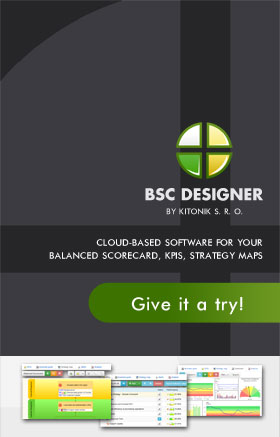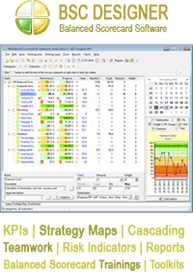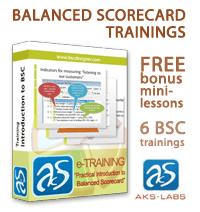Learning BSC Best Practice through experience
It is not easy to identify BSC best practice unless one is developed and implemented. Although, of course, there are basics that need to be observed in order for a BSC, at least on paper, to serve its purpose. First is to have adequate research to ensure that underlying assumptions of plans and implementing strategies are realistic. After the plans are finalized, outputs of actual applications should provide organizations the idea of what they are doing right or not.
But how do organizations do this exactly? Organizations have to ask themselves the question: Does the output contribute to the attainment of plans and objectives? If it does or does not, the next logical questions that have to be answered are: How much does it contribute or not contribute and why? And who are responsible? Obviously, answering these questions compels organizations to look deeper into the plans and processes employed that lead to the output. And in doing so, inefficiencies as well as efficiencies are identified. In both cases, actions are recommended to: correct deficiencies, and ensure that efficient or best practice is maintained or even enhanced.
This illustrates quite clearly that there is at least one basic BSC practice organizations cannot do without — monitoring. Monitoring systems identifies weaknesses in areas of planning and implementation and supplies the information that organizations need to determine where they are in relation to goals and objectives.
Without an effective monitoring system, organizations will invariably fail to respond to factors affecting operations. They will not, for example, be able to determine underlying reasons for falling productivity or sales, and thus will not be able to react accordingly and immediately. Monitoring takes many forms. Documents providing evidence of transactions that everybody takes for granted is actually monitoring on its own already. Another form more specifically focused on knowing what is happening in the organization is periodic progress reports. The best form of monitoring is assessment and evaluation meetings. In these meetings, the most, the least effective, and the inefficient are more easily identified. It is safe to say that monitoring is the most critical of all management tools, assuming of course that all else – plans, implementing structures, and systems – are in place.
Aside from regularly monitoring BSC scorecards implementation for the purpose of identifying weaknesses and strengths and coming up with appropriate measures, there are other ways to identify and develop potent BSC. One of them is learning from the experiences of others. There are many management forums that feature sharing of experiences and ideas on various issues that affect the management of organizations. It is always useful to have fresh and unbiased inputs, especially those proven to work. However, what might have worked for a certain organization might not actually work for others. So applying a system learned through these forums must not be done automatically and mechanically. Organizations must take into account variances in conditions and pick out and apply only those practices that have good potential for improving existing management methodologies.
Identifying BSC best practice can be done mostly through monitoring. Regular and effective monitoring itself can be classified as a best practice. Some organizations view evaluation and assessment functions as methodologies purely for finding out what is wrong. But they have another function of equal importance to good management — finding practices that work.
—
If you are interested in BSC Best Practice, check this web-site to learn more about scorecard best practice.


